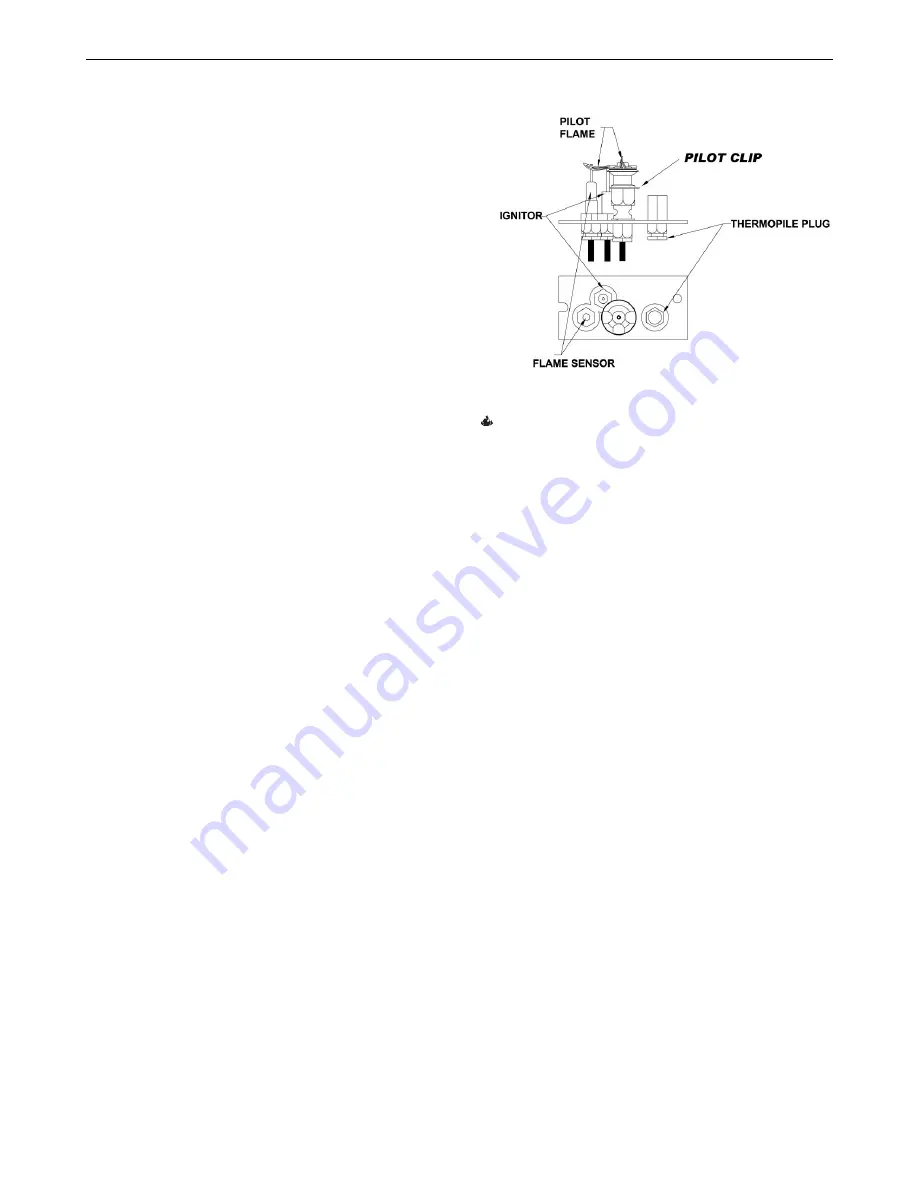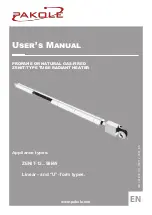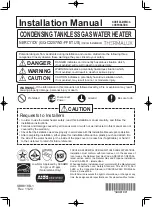
Hearthstone Quality Home Heating Products, Inc.
Bristol Model 8762
31
Odors and Impurities
A heater of this type may produce odors during
heater operation at any time due to impurities that
may exist in the immediate area around the unit.
Sources of impurities can be cleaning solvents, paint
solvents, cigarettes, candles, smoke, pet hair, dust,
adhesives, new carpet, and/or textiles. Such odors
will eventually dissipate. However, opening a
window or otherwise providing additional ventilation
to the area can alleviate the condition sooner. If any
odor persists, find and remove the cause, or contact
your dealer or an authorized service technician.
Initial Adjustments
Once the Bristol is set in place, connected and
assembled as described in the Clearances To
Combustibles,
Venting
Components
&
Configurations, Electrical Connections, and Gas
Supply and Connections sections of this manual, the
unit is ready to be lit and adjusted to its particular
installation. Hearthstone tests each unit prior to
shipment, so ignition should take place without
failure. However, a number of small adjustments
may be necessary to compensate for variations in
gas pressure, altitude, and other factors particular to
each installation.
Pilot Adjustment
The pilot light is preset by the manufacturer and
should not need adjustment. The pilot light flame
should be large enough to engulf the sensor
(refer to
Figure 30)
and to reach the light off ports on the
burner but not so large as to create excessive noise
or consume excessive gas.
However, it can be
adjusted by means of the pilot light adjustment
screw located on the gas control valve. Controlling
the Bristol may become erratic, nonexistent, or the
unit may go out, if the pilot flame is too small or
misdirected away from the flame sensor.
Figure 28 - Pilot Flame Pattern
WARNING: THE CONTROL HAS AN INTERLOCK
DEVICE. IF THE STOVE HAS BEEN LIT, IT WILL
NOT RELIGHT AGAIN IMMEDIATELY. AFTER
SHUTTING OFF ALL GAS FLOW, THE PILOT
BURNER CANNOT BE RELIT UNTIL THE FLAME
SENSOR
HAS
COOLED,
ALLOWING
THE
ELECTROMAGNET TO BE RELEASED
(APPROX.
60 SEC.)
.
Air Shutters
The air shutters are used to regulate the air-to-gas
combustion mixture of each burner, which in turn
influences the size and color of the flames. The air
shutters are factory positioned in the general
location needed for testing the unit with natural gas
(NG) and minimum venting. However, if the unit is
not burning as well as it should in your installation,
then the air shutters may need adjusting.
To determine if an air shutter needs adjustment, it is
necessary to view the flame pattern with the burner
output set at its highest setting. Allow the unit to
operate for at least 10 minutes to allow the entire
unit to reach temperature, and for the flame pattern
to stabilize. Generally, the more air (open shutter) in
the mixture, the bluer the flame. Less air (closed
shutter) results in a more yellow flame, but too little
air will result in incomplete combustion, low
efficiency and a dirty burn. There are two simple
guidelines to aid in determining the correct flame
pattern:
1. If the flame just above the surface of the
burner or at the base of the logs is
completely blue, the air shutter may be open
too far;
2. If the flame is dirty, sooty, or licks the top of
the firebox, the air shutter may be closed too
far.











































